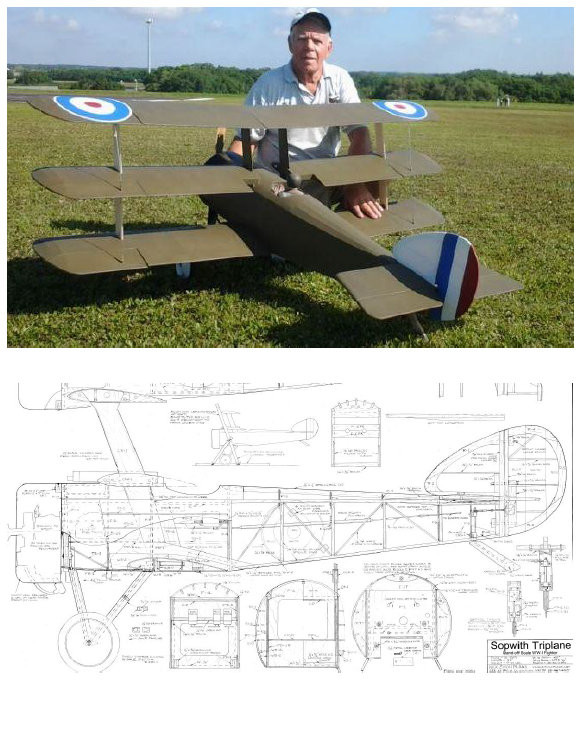Once upon a time, there was a P-38 model that never flew. It was built from a Royal kit. I thought it was cool, but not many of them survived for very long. To this day, I have only seen one P-38 model fly ( Wing Mfg ). Several models were considered, mainly the VQ ( Legend ) model and the Ziroli. Other ARF models look like cartoon character versions of the real airplane. The VQ model was going to cost me $900 US just to get it here and the Ziroli is also a huge build that will cost more than I can spend at the moment, by the time you add up all the accessories, landing gear, engines, etc. Not to mention that it would require a new vehicle or a trailer, just to transport the thing.
Enter Col Art Johnson
He was a WW2 veteran who had joined the USAAF in hopes of being able to fly a P-38. Well, he ended up flying everything but and so when he retired, he decided to build a radio control model. The plans for which were published in the June 1978 issue of Model Builder. It's a good size ( 15% scale, or 1.8" to the foot ) and should *just* fit in my car.
Col Art Johnson AMA biography
Also, check out the construction article.
Construction article from June 1978 Model Builder
P-38L-5 44-25319 was destroyed on April 7, 1945 in a mid-air collision. Edmond Schieve was the pilot. The other aircraft involved was P-38 44-25579, piloted by Jerry M Brown. Both aircraft belonged to the 59th FS of the 33rd FG in India.
This model placed fifth in sport scale at the 1977 Nationals at March AFB, in Riverside, California. As a sport scale model, some compromises were made from true scale. The most obvious being the landing gear. The real airplane sat at a 5.5 degree angle nose up, when on the ground, with a 13 degree clearance angle to the tail skids. Scale wheel diameters would be 4" for the nose and 5.5" for the mains, where the plans show 3" and 4" respectively. Art used 90 degree Rhom Air retracts. It's amazing that his airplane weighed only 13 lbs ready to fly, without fuel. Art's airplane also did not have flaps. He didn't know how to make operational Fowler type flaps and left it up to the builder. Although, he could have incorporated a plain or split flap, as Ziroli had done.
For more scale accuracy, the following modifications should be made to the plans
1. Correct wing tip airfoil ( NACA 4412 )
2. Correct aileron span
3. Constant chord flaps of correct span
4. Correct spacing between booms
5. Longer booms and center pod
6. Correct geometry landing gear
7. Span and chord of horizontal stabilizer
Monday, 30 September 2019
Ziroli Plans Sopwith Triplane Modifications
Image from Ziroli Plans website
If it weren't for the Sopwith Triplane, the Fokker Dr.1 would not have existed. There are far too many of the latter around. Nick Ziroli is more known for his WW2 designs, so his WW1 types are more "standoff scale". For the really discerning builder, there are more accurate plans/kits available.
This model is somewhere between 1/4 and 1/5 scale, depending on which dimensions you are looking at. The choice to call it 1/5 scale is one of marketing, I think. To go head to head with other 1/4 scale offerings is probably not a wise decision. However, when one looks more closely at the plans and takes some measurements, it turns out that the model is much closer to 1/4 scale in all but wingspan.
A 1/4 scale Balsa USA Pup, for example, has a 9 inch cowl, whereas this airplane is 9.25". The tail surfaces are almost exactly 1/4 scale. So, why were the wings clipped? It would seem that the reason is to improve flyability under most conditions by keeping the wing tips out of the dirt and making it easier to fly in wind. It is also heavy, at near 20 lbs, when most 1/4 scale models are around 14 or so. The plan shows a G-38 engine and it still needed 2 lbs of weight in the front of the cowl.
For those who want a WW1 type, but don't want to deal with delicate construction and wire rigging, this triplane might be for you and there are some very simple things that can be done to improve the scale accuracy with very little effort. Simply adding 2 rib bays to each wing panel would increase the span of each wing by 12" and bring the aspect ratio up to where it should be, as well as adding a good 300 sq in to the wing area. That by itself would probably be enough. With a little more effort, one could substitute an aluminum cowl from Balsa USA or Mick Reeves and make it work, while maybe being able to remove some nose weight. Going with larger wheels is also an option. The plan calls for the Dubro 5.6" wheels, but one could upgrade to the William's Bros 6-5/8" or the Dubro 7" wheels. Since the landing gear wire needs to be bent anyway, spreading the wheels apart to a 1/4 scale 16.5" ( They are about 13.5" on the plan ) is not a bad idea either.
Subscribe to:
Comments (Atom)

